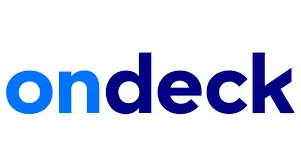Business line of credit terms, rates and fees
The repayment period for a business line of credit varies by lender, with terms ranging from 12 weeks to five years. Some lines of credit renew annually.
The business line of credit interest rate depends on the amount and terms you choose, your credit score and the lender’s current offerings. Typically, rates can range between 3% to 39% or higher.
In addition, some lenders may charge the following fees:
- Origination fee: $0 to 2% of the loan amount
- Maintenance fee: Monthly or annual fee for keeping the line open. Some lenders waive this fee depending on the withdrawal amount or if your business is a startup.
- Annual fee: $0 to $175
- Draw fee: $0 to 2% of the withdrawn amount
- Late fee: Up to 5% of any past-due amount
Business line of credit requirements
Lenders typically look at the following to determine your eligibility for a business line of credit:
Credit score: Your personal FICO Score and business credit report both play a role in determining your creditworthiness. Many lenders require a minimum credit score of 600 (or more) when you apply for a business line of credit, although having a higher score can help you secure a better interest rate.
Time in business: Most lenders want a steady track record of at least one to two years, although certain lenders will work with those in operation for only six months.
Annual revenue: You must show a steady income stream to qualify for small business financing. The amount varies greatly, with some lenders accepting annual revenue as low as $36,000 while others want to see $480,000.
Secured lines of credit vs. unsecured lines of credit
Business lines of credit can be secured or unsecured. A secured business loan requires collateral, such as real estate or equipment. If you fail to repay, the lender could seize your assets.
Although an unsecured business line of credit doesn’t require collateral, some lenders may put a lien on your business assets or require you to sign a personal guarantee. In this case, you could lose certain assets if you default.
Thing to know
Newer companies may not qualify for an unsecured business line of credit since they need a solid financial history or business credit, making a secured line of credit a better option. A secured line of credit offers advantages, such as possible higher spending limits and lower interest rates.
Business line of credit vs. business credit card
A business credit card is another form of revolving credit where you only pay for what you use. The advantages of a business credit card include a quick and easy application process and the ability to use it almost anywhere while earning rewards and bonuses.
The most significant difference between business lines of credit versus business credit cards is that credit cards carry higher interest rates than lines of credit, typically ranging from 15.24% to 30.74%. Small business lines of credit can be used in more situations. For example, you might not be able use a credit card for leasing expenses, payroll services or certain vendor invoices, but a small business credit line can generally cover those expenses.
Business line of credit vs. business term loan
A business line of credit is similar to a short-term business loan or emergency business loan in that you can use it for various business expenses. However, a business line of credit gives you access to immediate funding without the pressure to use the total amount.
If you need to tackle long-term expenses, a working capital loan could be a better fit. Business loans typically have fixed interest rates and business lines of credit have variable rates, which may be another deciding factor.
| Business line of credit | Small business loan |
| Repayment schedule | Repayments begin after you make a withdrawal from your line of credit. Interest applies only to the amount you borrow. | Repayments start as soon as you receive your loan or shortly after. Interest applies to the entire loan amount. |
| Terms | 12 weeks to five years | 3 months to 25 years |
| Use of funds | Short-term or immediate expenses | One-time or long-term expenses |









